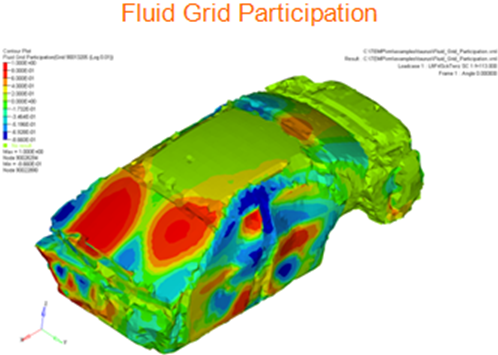Structure grid participation provides you with the local formation of the structure, enabling you to better align the higher contribution areas with the formation that is in the panel (in order to determine what panel modifications are needed). While Fluid grid participation is more useful in terms of localizing the general area that is contributing the most.
The scaling and the projection of the response are done in the exact same way for both Structure and Fluid grid participation. Since the interface contributions are being made to the same grid point, similar plots will be displayed (see the examples below).


| Note | Both Structure and Fluid grid participation are scaled by element areas, however because there are so many elements in the structure, typically the structure mesh is denser than the fluid mesh (therefore the incoming participation is smaller, and as a result tends to be more spread out). |
Fluid participation advantages
| • | Provides a more direct view of the contributions since it shows the impact of the structural vibrations. |
| • | Participation patterns tend to be more distinct in Fluid grid participation plots, making them easier to visualize than the Structure grid participation. |
| • | Involves a smaller number of output grids (typically only a few thousand grids), compared with the Structure grid participation output which is typically 100 times larger. |
| • | Fluid grid participation can be requested for all analysis frequencies and the resulting file size will still be manageable. |
| • | For best results, couple the Fluid participation output with select Structure grid participation output at frequencies of concern. |









